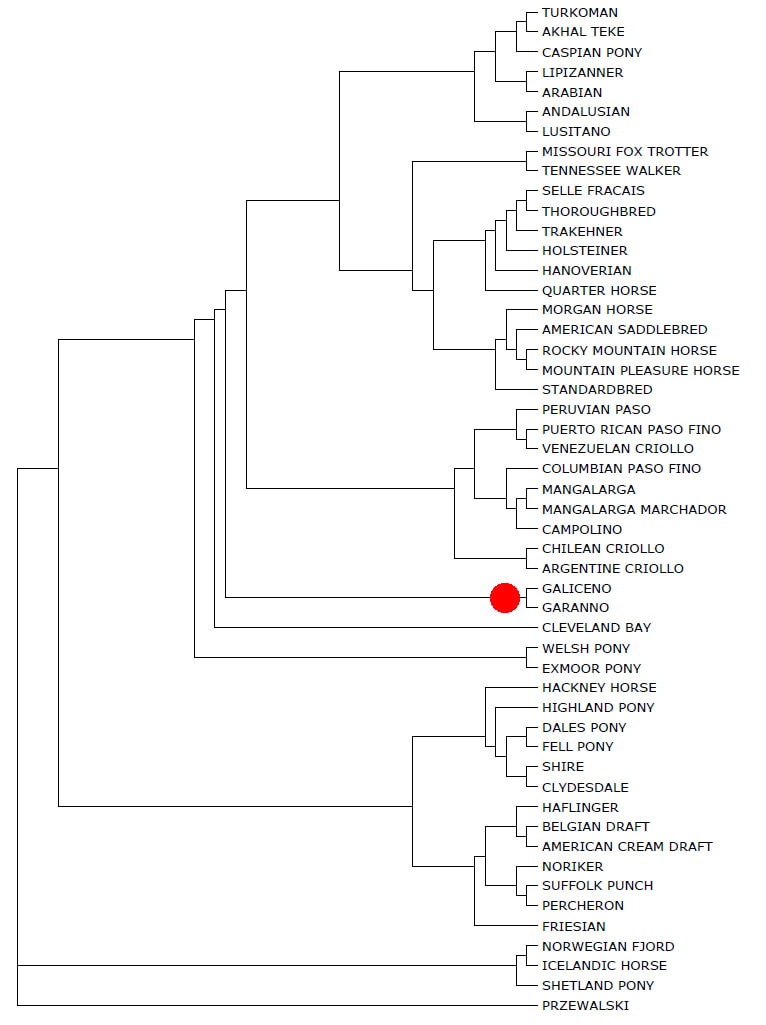Characteristics of horses of Spanish descent as seen on Galiceno Horses.
Description of characteristics are from Dr. D. Phillip Sponenberg, Virginia Tech, Blacksburg, Virginia,24061; Dr. E. Gus Cothran, Department of Integrative Biosciences, College of Veterinary Medicine and Biomedical Science, Animal Genetics lab, Texas A&M University, College Station, Texas 77843;
Lothlorien Farms(www.lothlorienmustangs.webs.com); Center for Americas First Horse (www.centerforamericasfirsthorse.org); and Horse of the Americas(www.horseoftheamericans.com).
Lothlorien Farms(www.lothlorienmustangs.webs.com); Center for Americas First Horse (www.centerforamericasfirsthorse.org); and Horse of the Americas(www.horseoftheamericans.com).
Body conformation of a stallion

Spanish Colonial Horses have a short back. The neck, shoulder, back, hip, and depth of chest are equal.
This is a Galiceno stallion, Diamonte Blanco
Body Conformation of a mare
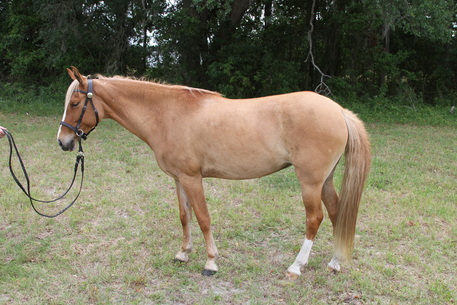
Spanish Colonial Horses have a short back. The neck, shoulder, back, hip, and depth of chest are equal.
This is a Galiceno mare, Diosa de Oro
This is a Galiceno mare, Diosa de Oro
Conformation from front view
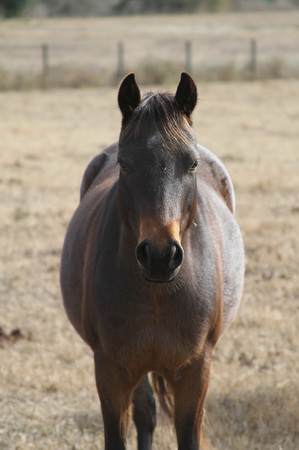
"These horses typically have narrow but deep chests, with the front legs leaving the body fairly close together. Deep but narrow conformation provides for lung capacity but also for cooling ability which is an important component of endurance." Quote from Sponenberg, 2011
This is a Galiceno mare, NiNa.
Characteristics of the head
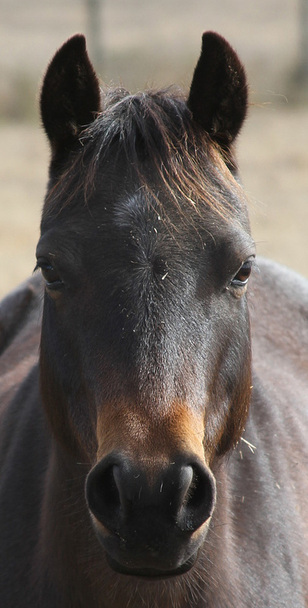
"The nostrils are elastic, crescent shaped with roomy nasal cavity, allowing for large extension and ample air intake. The eyes are set low and wide; bone over the eye is heavier and more protruding than modern horses. Ears are fine and
narrow, often hooked on the tips."
Quote from Horse of the Americas Conformation and Standards
narrow, often hooked on the tips."
Quote from Horse of the Americas Conformation and Standards
Profile of the head
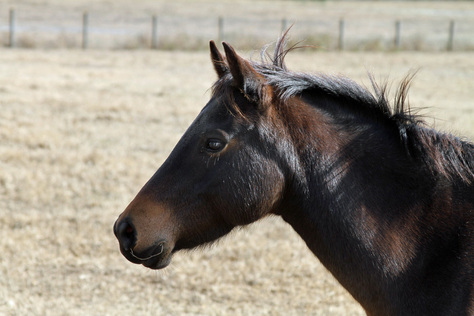
The head shows "straight or convex profiles that are evidence of the Iberian ancestry."
~ Center for Americas First Horse
~ Center for Americas First Horse
Characteristic of the legs
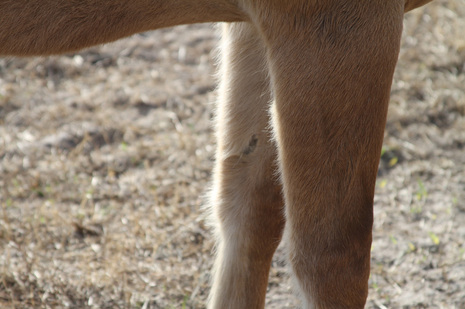
"The chestnuts are small or missing altogether" ~Sponenberg, 2011
Rear view conformation
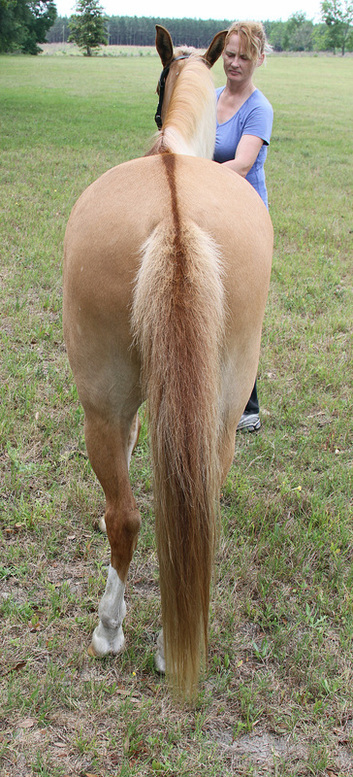
"From the rear view they are usually 'rafter hipped' meaning that there is no distinct crease at the backbone, but rather the muscling of the hip tapers up so the backbone is the highest point." ~Sponenberg, 2011
Coloration
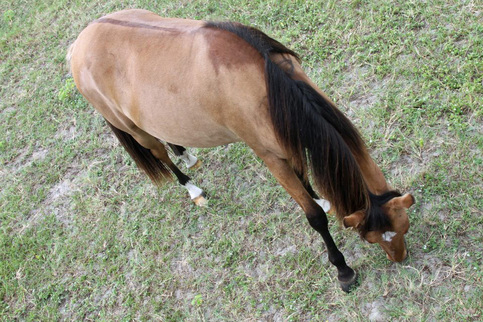
There is considerable variation in coloration among Colonial Spanish horses and the Dun factor dorsal stripe is not unique to Spanish breeds. Galicenos are all solid colors or roans, however. This young mare, Suwannee Love, shows the dorsal stripe as well as shoulder cross marking
Another view
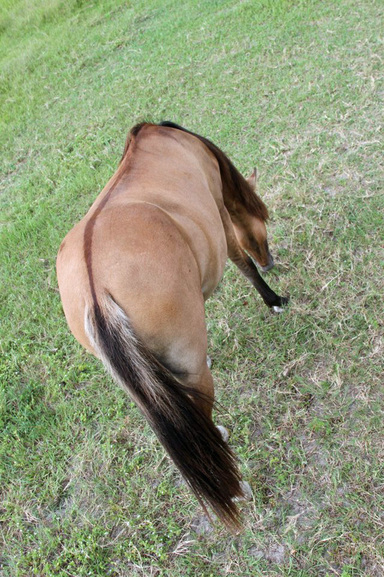
Galicenos are all solid colors or roans. Paints or Appaloosa patterns are not allowed in the registry. Another view of Suwannee Love shows the dorsal stripe cross markings, and the zebra bars on the legs, all primitive markings.
Genetics
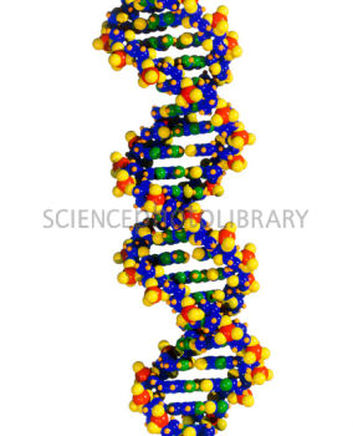
Modern biology has given us another tool beyond morphology to identify Spanish markers in the DNA of the horses. Dr. Gus Cothran of Texas A&M was kind enough to test samples from our Galiceno herd. The results show Galiceños have a very close relationship to the Garrano, a primitive Iberian Horse. A recent study has revealed that the closest relative of the Garrano-Galiceño group is the Curly Horse of Southern Argentina. It is interesting that many of our horses have winter coats that are quite "curly."
